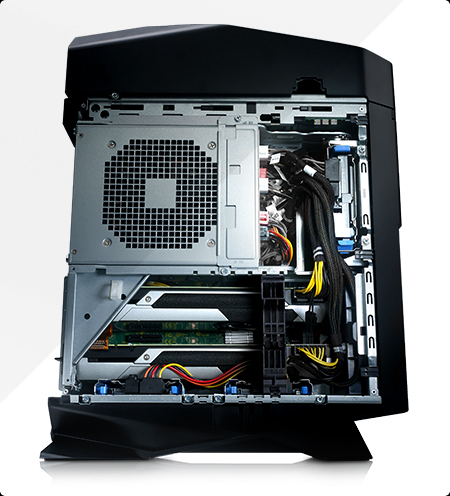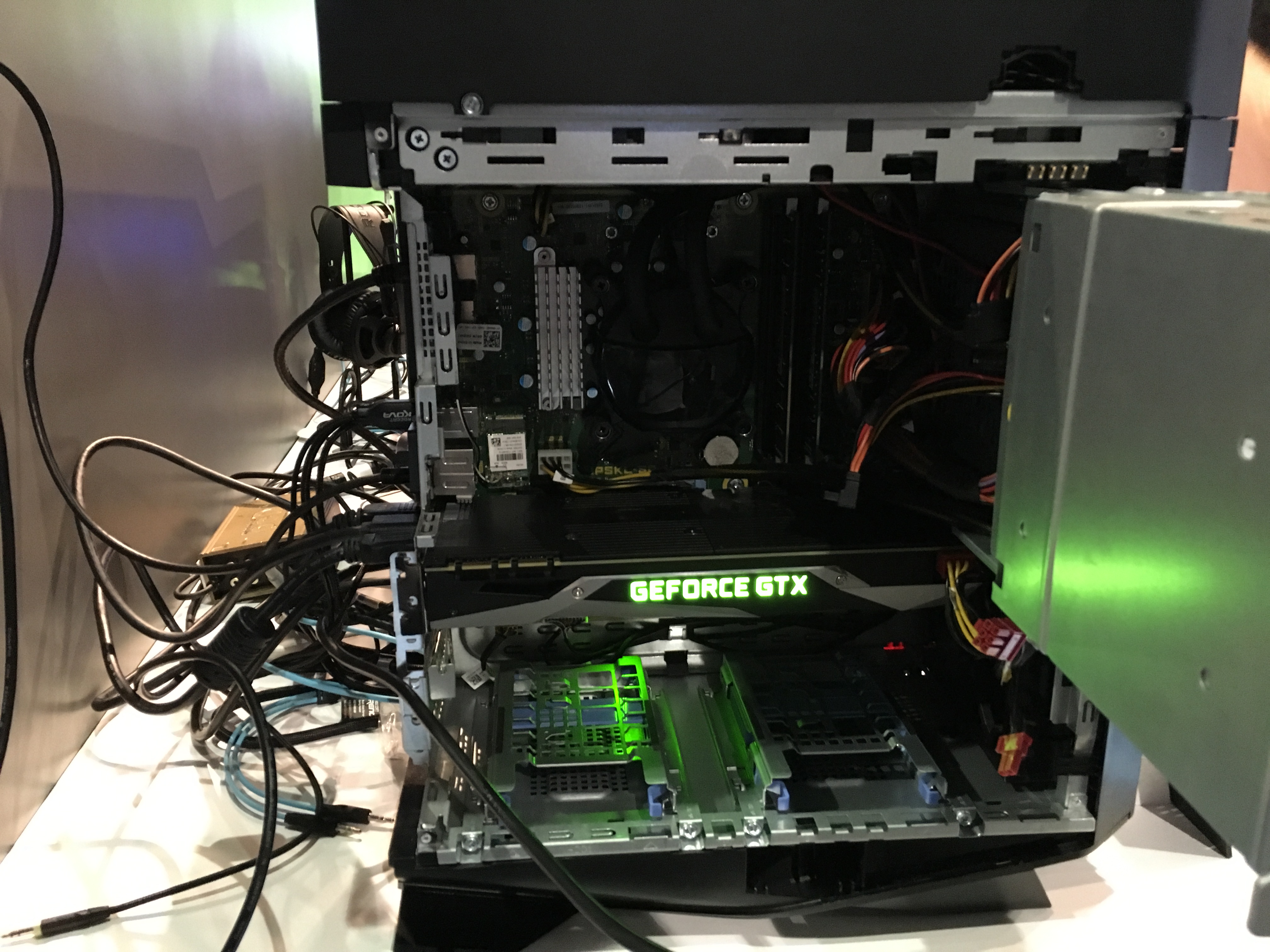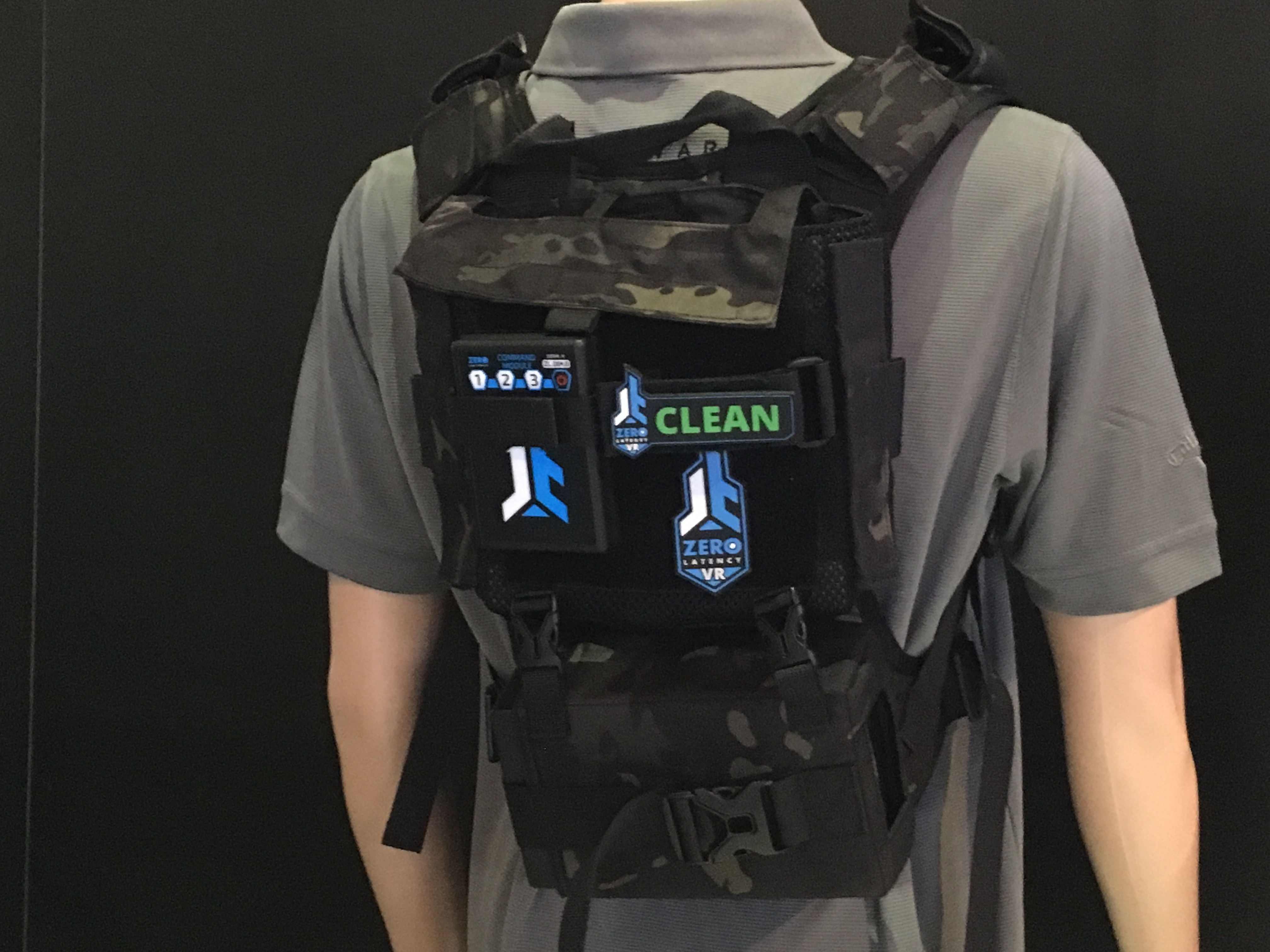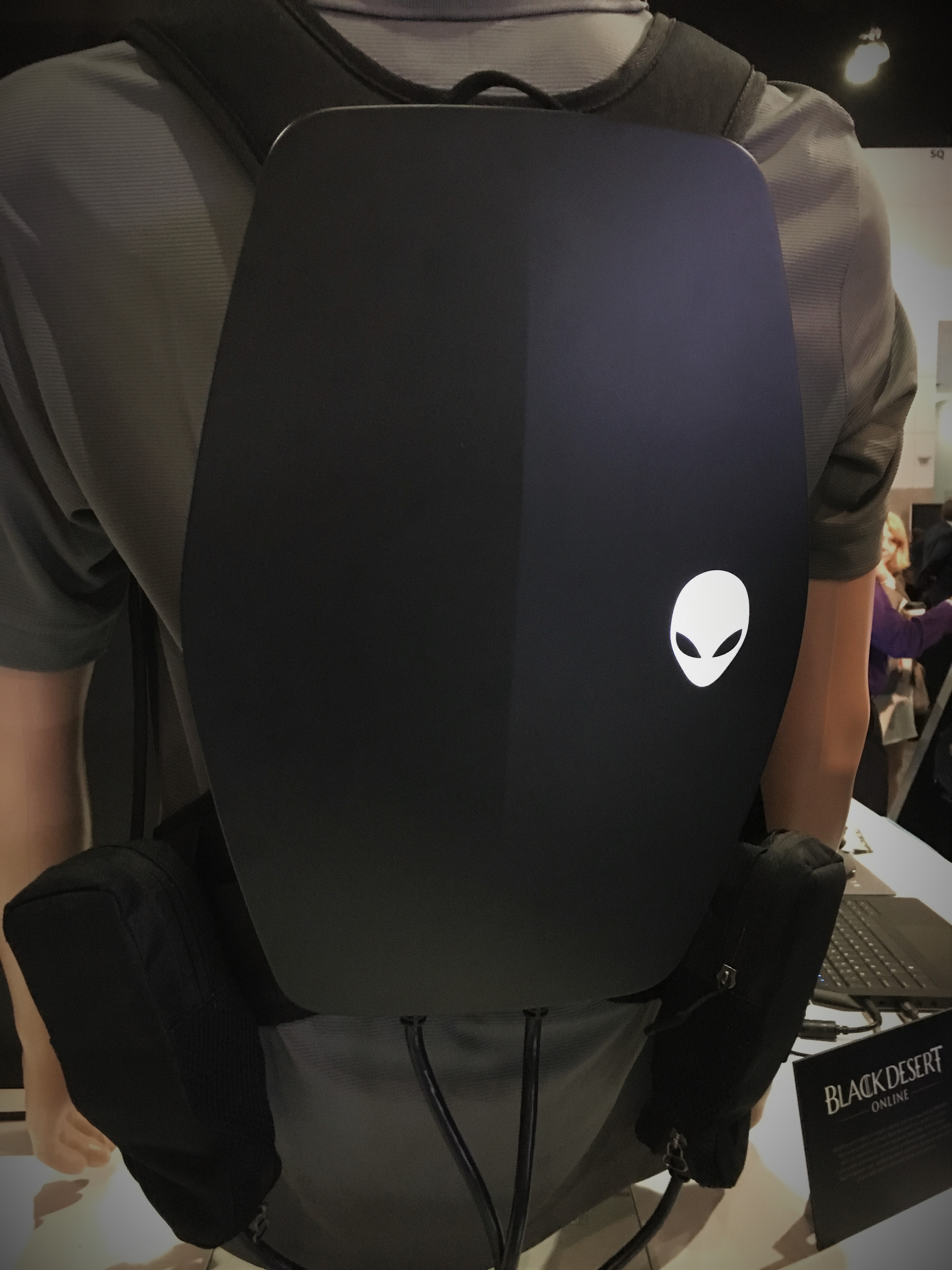Alienware Aims At Virtual Reality Market With VR Backpacks, System Updates
With consumer VR in full swing, Alienware has tailored its latest system offerings with VR capabilities in mind. Alienware also showcased a couple of VR backpack solutions that are still in under development.
The Alienware Aurora's Tool-less Chassis
Alienware updated the Aurora line, which is composed of compact-mid tower systems. The updated Auroras may be configured with Nvidia Pascal cards dual GPU configurations.
The Aurora’s updated chassis features a tool-less setup. The LED-lit side panel slips off easily with no screws or wires, and the the LEDs automatically power back on when the panel is reattached. Removing the side panel reveals the power supply, which is held by an arm that swings outward; the CPU cooler and motherboard are accessible from behind the arm. This features can save a considerable amount of space compared to traditional case setups, in which power supplies are installed above or below the motherboard.
Keeping with Aurora’s tool-less design, the arm also secures components attached on the motherboard’s PCI slots, eliminating the need for screws. The new Alienware Aurora starts at $799, and the VR-ready configuration is priced at $1,099.
The Alpha R2 Supports External Graphics
The Alienware Alpha R2 is an update to the original Alpha. The Alpha R2 now features Skylake processors. Besides the Skylake facelift, the Alpha R2 may be configured with either a Radeon R9 M470X or an Nvidia GeForce GTX 960. The Alpha R2’s components, save the GPU, are easily accessible, so users may change the CPU, storage and memory themselves.
If you need more graphical horsepower, the new Alpha R2 also features support for Alienware’s external graphics amplifier. The new Alienware Alpha R2 retails at $599 for the R9 M470X version and $799 for the GTX 960 version. It should be noted that the graphics amplifier will work only with the GTX 960 version. This is a departure from a recent trend of external GPU modules shedding their proprietary restrictions in favor of compatibility with more machines, as we've seen with the Razer Core, Powercolor's Devil Box prototype and Asus' ROG XG Station 2.
Alienware Area-51 Updated With Broadwell-E
Get Tom's Hardware's best news and in-depth reviews, straight to your inbox.
The Area-51 is Alienware’s flagship desktop system. With the launch of Pascal and Broadwell-E, Alienware now offers Area-51 configurations with the Intel-Core i7-6950X and up to two Nvidia GTX 1080s.
Alienware 13 Laptop Has An OLED Display
The Alienware 13 gaming laptop is another Alienware staple. The latest iteration of the 13 stands out because it offers an OLED display. The OLED panel, which was developed in collaboration with Samsung, offers excellent vibrancy and rich blacks, unlike traditional backlit LCD displays. The new Alienware 13 also features support for the external graphics amplifier. If the Alienware 13 with OLED is successful, Alienware plans to extend OLED technology to its 15- and 17-inch models. The Alienware 13 with an OLED display starts at $1,299.
VR Backpacks Currently Under Development
Two VR backpacks were showcased at Alienware’s booth, which makes a veritable trend. The first was designed by Zero Latency VR in Australia to be ideal for small VR-ready machines; it fits the Alienware Alpha R2 snugly. The bottom houses a battery that powers the system. The second backpack features a proprietary hard shell design with a built-in battery and two swappable external battery packs attached on the sides.
The backpack also made a brief appearance during the PC Gaming Show, where AMD’s Lisa Su mentioned that it contained the upcoming Radeon RX 480. There is no price or release date for the backpack yet.
Alexander Quejado is an Associate Contributing Writer for Tom's Hardware and Tom’s IT Pro. Follow Alexander Quejado on Twitter.
Tom's Hardware is the leading destination for hardcore computer enthusiasts. We cover everything from processors to 3D printers, single-board computers, SSDs and high-end gaming rigs, empowering readers to make the most of the tech they love, keep up on the latest developments and buy the right gear. Our staff has more than 100 years of combined experience covering news, solving tech problems and reviewing components and systems.
-
hfitch So added wait to your body so you can strap vr on. Not sure I like that. Only would work if well you want immersion for like Halo or something.Reply -
coolitic Who just happened to think about the Xbox Scorpio when they saw the picture with the scorpion on the Alpha?Reply -
Haravikk If the Alienware back-pack is based around the Alpha it could be a more viable option than some of the other offerings; less upgradeable of course, but I'd rather strap an Alpha to my back as those are tiny. Still requires batteries of course, but they're pretty good on power consumption, unlike more modular systems. Though I'm not sure if the 960 has enough power for VR? Of course every GPU maker is trying to convince us only their latest GPUs are good enough, and I'm not convinced that that is true.Reply
That external graphics brick however is hideous; the full-sized PSU just makes it far too big, it really needs a custom PSU that fit a better form factor. In fact a vertical design could be a lot more interesting with a PSU at the bottom and the card oriented to expel air from the top, it'd be easier to tuck under a desk or behind a monitor or such this way too, a wide, long box just doesn't really mesh well with a compact laptop. -
jkflipflop98 Makes 0 sense. Rift has to be connected via USB to a desk-mounted camera. That's instantly a no-go.Reply
Vive requires you stay within a max of a 15 square meter play area. It's not like you're going to walk out your front door and go gaming down the street. You're still stuck inside a tiny little area. So you're basically trading in a tiny little cord that you forget about as soon as the game starts for a 10 pound computer strapped to your back that you're sure as hell never going to forget is there.
What a stupid idea.







